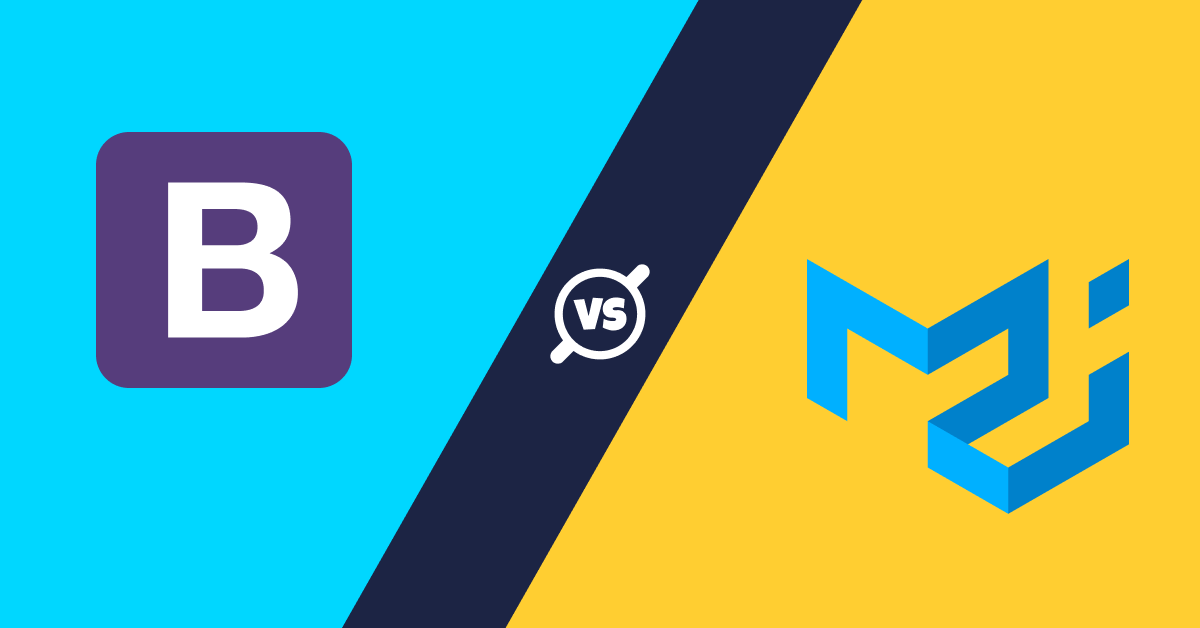
Bootstrap and Material UI are two of the most popular front-end frameworks used to build responsive and visually appealing web applications. While both frameworks have their own unique features, there are some key differences between them that can help you decide which one to choose for your next project. In this blog post, we will compare Bootstrap and Material UI and explore their strengths and weaknesses.
Bootstrap Overview:
Bootstrap is a free and open-source front-end framework developed by Twitter. It provides a comprehensive set of HTML, CSS, and JavaScript components that can be used to build responsive and mobile-first websites and web applications. Bootstrap’s popularity lies in its ease of use, as it comes with pre-designed templates and themes that can be easily customized to match the branding of your website. Bootstrap’s grid system is one of its most popular features, allowing developers to easily create responsive layouts that work on different screen sizes.
Material UI Overview:
Material UI is a front-end framework for React, a popular JavaScript library used for building user interfaces. Material UI provides a set of React components that implement Google’s Material Design guidelines. Material Design is a design language created by Google that emphasizes clean, modern, and intuitive design. Material UI’s components come with built-in animations and transitions, making it easy to create visually stunning and interactive user interfaces.
Comparison:
1. Ease of use:
Bootstrap is generally considered easier to use than Material UI. This is because Bootstrap is a standalone framework that can be used with any front-end library or framework, whereas Material UI is specifically designed for use with React. This means that if you’re already familiar with React, Material UI will be easier to use, but if you’re not, you may need to spend more time learning the basics of React before you can use Material UI effectively.
2. Design:
While Bootstrap and Material UI both offer pre-designed templates and components, they differ in their design philosophy. Bootstrap’s design is more utilitarian and less opinionated, meaning it can be easily customized to match the branding of your website or application. Material UI, on the other hand, follows Google’s Material Design guidelines, which prioritize clean, modern, and intuitive design. If you’re looking for a design language to follow, Material UI may be the better choice.
3. Components:
Both Bootstrap and Material UI offer a wide range of components, including buttons, forms, modals, and more. However, Material UI offers more complex and customizable components such as tables, charts, and data grids. Additionally, Material UI’s components come with built-in animations and transitions, making it easier to create visually appealing user interfaces.
4. Customization:
Bootstrap is more customizable than Material UI, as it provides a variety of customization options such as themes, color schemes, and typography. Material UI, on the other hand, follows Google’s Material Design guidelines, which may limit the extent to which you can customize the design.
5. Performance:
Bootstrap is generally faster than Material UI because it’s a standalone framework that doesn’t require any additional dependencies. Material UI, on the other hand, is built on top of React, which can add some overhead to your application’s performance. However, Material UI’s components are highly optimized for performance, so this may not be a significant issue.
Conclusion:
Bootstrap and Material UI are both powerful front-end frameworks that can help you build responsive and visually appealing web applications. Which one you choose will depend on your specific needs and preferences. If you’re looking for a framework that’s easy to use and highly customizable, Bootstrap may be the better choice. However, if you’re looking for a framework that follows a specific design language and offers complex and customizable components, Material UI may be the better choice. Ultimately, both frameworks have their strengths and weaknesses, and the best choice will depend on your specific requirements.